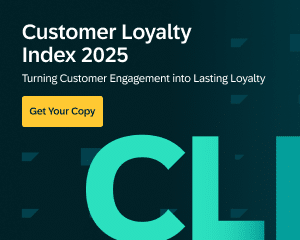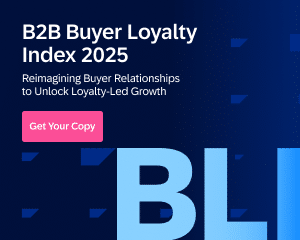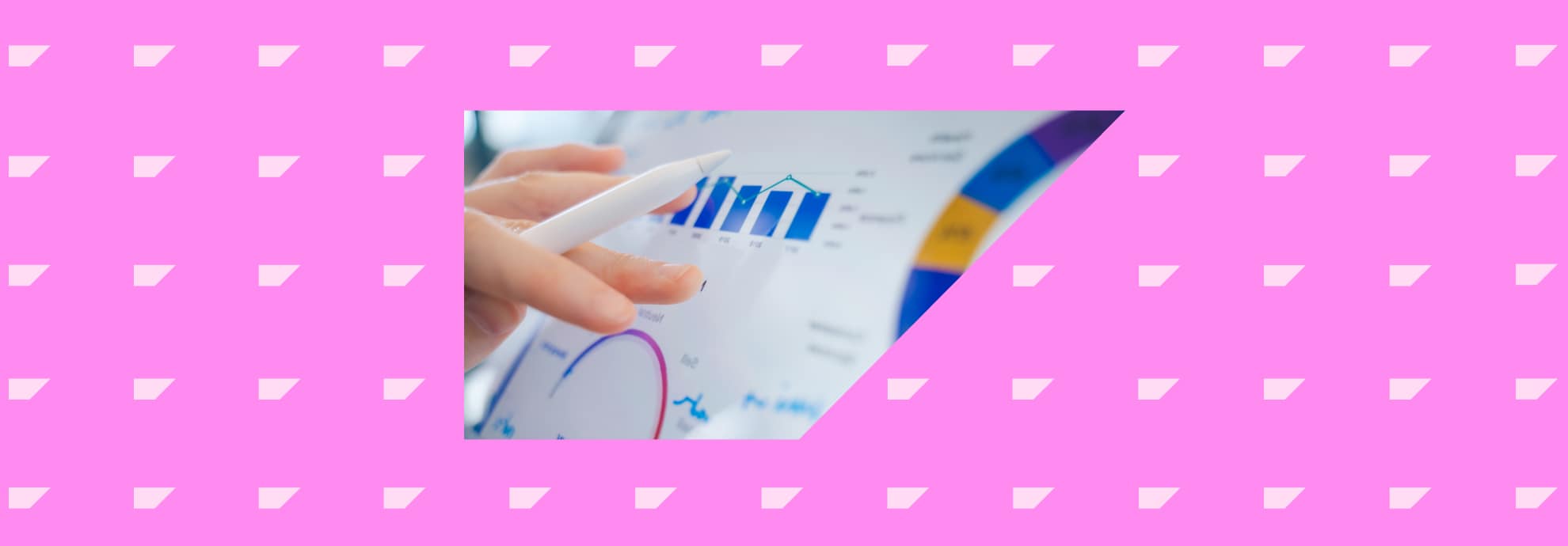Ever feel like the data rug is being pulled out from under you? Just when your team perfected look-alike audiences and retargeting tactics, privacy regulations and cookie deprecation changed the rules of engagement.
If you’re responsible for revenue growth, that shift can feel daunting, but it also opens the door to something far more durable: first-party data.
First-party data enables brands to build direct, trust-based customer relationships while powering personalized experiences across the entire lifecycle. Collecting it is only step one; activating it at a strategic scale is the real advantage.
In this article, we’ll show how leading brands turn first-party data into measurable business outcomes using AI, automation, and omnichannel technology.
But first, let’s zoom out and see why the current data market makes this shift mission-critical for growth.
If it feels like your tracking toolkit shrinks every quarter, you’re not imagining things. As third-party cookies phase out and data regulations tighten, first-party data has become one of a marketer’s toolkit’s most valuable and sustainable assets.
Here’s what’s happening (and why it matters):
There has been a growing push for greater transparency and control over user data collection and use.
The European Union’s General Data Protection Regulation (GDPR) went into effect in 2016, and similar regulations are being proposed in other countries, such as the United States and Canada.
These regulations limit how companies collect and use personal data, making it difficult for Google and other major browsers to continue using third-party cookies.
How major browsers have reacted (get ready for a spin)
Disclaimer: browser guidelines change all the time. These are the latest news:
Google has been under pressure (for a while) from regulators to address privacy concerns. Here is a very concise history:
- Initially planned to phase out third-party cookies by 2022. However, it delayed the move until 2024 and then again until 2025, but more recently, Google abandoned its earlier plans.
- This change was introduced as part of the Privacy Sandbox initiative, a set of proposals to improve user privacy that were considered controversial.
- Google’s U-turn on 3rd-party cookies highlights why exploring cookieless tracking and first-party data is essential.
Safari uses “Prevent Cross-Site Tracking” to limit third-party cookies and prevent them from creating detailed user profiles. Users can also delete cookies manually through their browser settings.
Firefox blocks third-party cookies by default using its “Enhanced Tracking Protection” feature. However, it announced plans to remove the Do Not Track toggle from its Privacy and Security settings by 2025, claiming it was because “nobody was listening.”
These changes highlight why exploring cookieless tracking and first-party data is essential.
How the constant uncertainty affects marketers
- Audience gaps: Traditional look-alike and retargeting pools are shrinking, driving up acquisition costs.
- Fragmented insight: Data scattered across e-commerce, POS, loyalty, and email platforms makes it hard to see the full customer story.
- Measurement blind spots: Without cookies, attributing revenue to campaigns gets murkier, especially across channels.
The first-party opportunity
First-party data flips that script. Because the information comes directly from opted-in interactions (think email sign-ups, purchase history, loyalty programs, or in-app behaviour), you control the quality, consent, and usage. When activated through an AI-ready platform like SAP Emarsys, marketers can:
- Create trust-based value exchanges: Offer personalised deals or content in return for explicit permission to use customer data.
- Unify profiles in real time: Stitch together on-site, in-store, and mobile signals into a single, actionable identity.
- Trigger precision messaging at scale: Use AI to predict intent, personalise content, and orchestrate journeys without relying on third-party look-ups.
The sunset of third-party cookies isn’t the end of personalisation — it’s the beginning of a more transparent, high-fidelity approach powered by data your customers willingly share.
6 Real-World Examples of First-Party Data in Action
Now that we’ve unpacked why first-party data is soaring in value, let’s see how these pioneering brands turn consent into conversion.
1. BrandAlley: Driving retention with predictive personalization

BrandAlley is a UK-based fashion and home retailer specializing in flash sales and exclusive discounts.
Challenge: With high email volume and a fast-moving catalog, BrandAlley needed to reduce customer churn and boost repeat purchase rates.
Solution: Using SAP Emarsys, BrandAlley unified behavioral and purchase data to build AI-powered lifecycle campaigns. By predicting which customers were likely to churn, they launched reactivation flows with personalized offers before users disengaged.
First-party data in play: BrandAlley tracks every click, browse session, and basket addition inside SAP Emarsys. Those on-site behaviours — combined with purchase history — feed the churn-prediction model that decides who gets a win-back offer.
Results:
- 24% of at-risk customers were won back
- 10% increase in average basket value using AI-powered recommendations
- Higher inbox placement and engagement rates
- £9.6 million increase in new customer revenue
- Referred customers spend 63% more in their first six months
Learn more: How BrandAlley Grew Their Business with a Brand Advocacy Strategy.
"What has been really rewarding to see since starting using AI is that we saw an increase by 10% in our average basket value on a particular set of customer lifecycle. We also won back 24% of the customers likely to defect."
2. Hobbii: Segmenting craft enthusiasts using behavioral signals
Hobbii is a global e-commerce brand selling yarn and craft supplies, known for its creative community and pattern-based marketing.
Challenge: Their newsletter strategy lacked segmentation, leading to over-messaging and missed revenue opportunities.
Solution: With SAP Emarsys, Hobbii linked pattern downloads to customer profiles and created real-time behavioral segments (e.g. knitters vs. crocheters). This data fed into automated journeys with personalized offers and tutorials.
First-party data in play: Pattern downloads, site searches, loyalty-club preferences, and purchase history tell Hobbii who crochets, who knits, and who is dabbling in macramé.
Results:
- 1.1M customers enrolled in their “My Hobbii” loyalty program
- 20% of revenue from personalized automations
- Increased repeat purchases through targeted content
Learn more: How Hobbii Knitted Data and Content to Gain 300%+ Revenue
3. Booktopia: Using data to maximize lifecycle value
Booktopia is Australia’s largest online bookseller, offering print and digital books across all major genres.
Challenge: Booktopia wanted to increase purchase frequency and reduce customer churn without over-relying on promotions.
Solution: Booktopia has scaled to over $200M in annual revenue by placing loyalty at the heart of its marketing. With the help of SAP Emarsys, Booktopia segmented users by lifecycle stage (leads, first-time buyers, defectors) and built a full-funnel automation program.
First-party data in play: Purchase history, browsing trails, wish-list additions, and browsing behavior were used to recommend next reads, replenishments, or personalized deals.
Results:
- 4x revenue from targeted win-back campaigns
- 40% + of total revenue influenced by email and lifecycle automations
- 60% higher conversion from “next best product” email flows
Learn more: How Harnessing Customer Loyalty Helped Booktopia Scale to $200m/year
"We would rather lose out on an award and lose out on revenue than disappoint a customer. So one of the major differences between us and so many others out there is that we actually structure our acquisition program and retention program after that."
4. PUMA: Scaling personalization across channels

PUMA is one of the largest sportswear brands globally, operating in numerous countries and languages.
Challenge: PUMA aimed to deliver personalized experiences across all consumer touchpoints but faced challenges in unifying data and scaling personalization efforts.
Solution: With SAP Emarsys, PUMA integrated customer data across web, mobile, and in-store channels. They utilized AI and automation to create personalized journeys based on customer behavior and preferences, including product recommendations and targeted offers.
First-party data in play: Local site behaviour, store-purchase receipts, language settings, and loyalty-tier status flow into a single profile, ensuring every campaign reflects currency, size, and style preferences.
Results:
- 5x increase in email revenue within 6 months
- 50% growth in their customer database
- 25% increase in email open rates
- 10x growth in weekly subscribers
Learn more: Achieving 5X Revenue and 50% Database Growth within 6 Months of Adoption
"We worked very closely with SAP Emarsys to build all of our templates and build the logic that meant we could do that at scale. When we send an email, the logic is built, so the subject line will always appear in the right language for that customer … We can use block targeting to really focus the content to make sure everyone's seeing the right thing. And that essentially means we only need to build every campaign once."
5. AO: Enhancing customer retention through data-driven engagement
AO is a leading online retailer specializing in household appliances and electrical goods.
Challenge: AO sought to improve customer retention and increase engagement with their newsletters by leveraging their first-party data more effectively.
Solution: Collaborating with SAP Emarsys, AO conducted a strategic data audit to enrich their customer profiles. They implemented automated campaigns tailored to specific customer journeys, utilizing web behavior and purchase history to deliver relevant content and offers.
First-party data in play: Warranty registrations, delivery-slot selections, and after-sales service calls enrich AO’s email targeting far beyond a simple purchase record.
Results:
- 150% increase in newsletter engagement
- +14% opt-in database growth from SAP Emarsys Web Channel
- Improved average order value of +12%.
- 45% of revenue is driven by automation.
Learn more: How AO revolutionized customer retention and increased newsletter engagement by +150%
"We have a really good partnership with SAP Emarsys over the last 4 or 5 years, which has really allowed us to challenge ourselves and delve into our key issues and problem areas within our email and CRM channels."
6. Ferrara: Building direct-to-consumer relationships with unified data

Ferrara is a US-based confectionery company known for brands like Nerds, Trolli, and Brach’s.
Challenge: Ferrara aimed to create direct consumer relationships across its top 10 brands but faced fragmented data and limited personalization capabilities.
Solution: By implementing SAP Customer Identity Access Management (CIAM) for B2C, SAP Customer Data Platform, and SAP Emarsys, Ferrara unified customer profiles, enabling real-time data processing and hyper-personalized marketing campaigns.
First-party data in play: Permission-based registrations collected via SAP CIAM capture candy preferences and flavour votes, feeding real-time profiles inside SAP Emarsys.
Results:
- 59% increase in contactable customers.
- 35+ diverse and delicious brands.
- 10-20% above the industry average for open rates for email campaigns.
- Enhanced customer onboarding experiences
- Improved personalization capabilities with permission-based data
- Strengthened trust and engagement through secure data handling
Learn more: How Ferrara Sweetened Customer Engagement Through Direct Consumer Relationships.
"Already, e-mail has been a bit of a game changer for Ferrara. Our campaigns have driven really high engagement, and from an investment perspective, it's a very effective channel for building loyalty with consumers."
Winning brands are building growth engines around the data customers choose to share with them. When you control the data, you control the experience, the relationship, and the revenue.
How SAP Emarsys helps:
- Collect and connect: SAP Emarsys pulls web, app, in-store, and loyalty signals into one real-time profile, eliminating the blind spots from siloed systems.
- Activate everywhere: Drag-and-drop, AI-ready journeys let you inject that data into truly Personalized Marketing across email, SMS, mobile wallet, paid media, and more.
- Predict and optimize: Built-in AI-powered personalisation scores churn risk, next-best product, and future spend, so you can focus your budget where it will drive the highest customer lifetime value.
- Prove impact: Strategic Dashboards surface engagement trends, revenue attribution, and retention lift in seconds, giving you board-ready insight instead of spreadsheet sprawl.
For a deeper look at how unified data plus AI elevates every stage of the funnel, explore our Customer Engagement guide. Or see how brands are already deploying omnichannel marketing automation to personalize at scale.
Ready to unlock the full value of your first-party data?
Request a demo and discover how SAP Emarsys helps marketers turn insight into action – and action into measurable growth.







